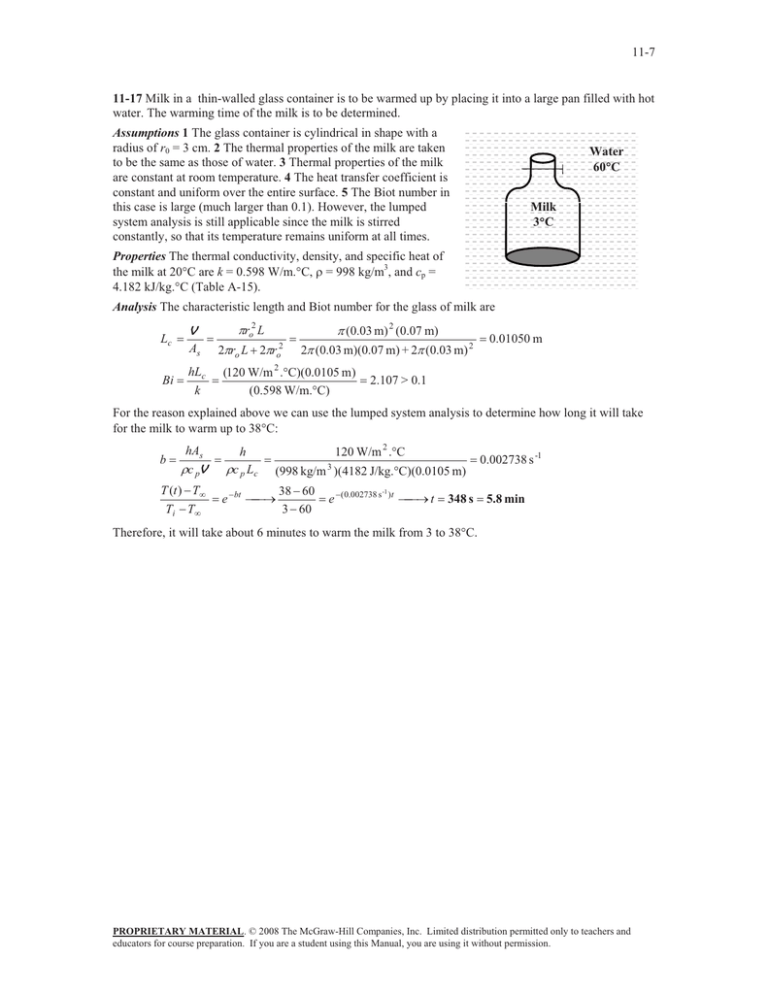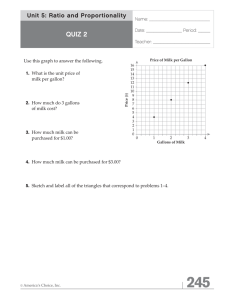Document 12446522
advertisement

11-7 11-17 Milk in a thin-walled glass container is to be warmed up by placing it into a large pan filled with hot water. The warming time of the milk is to be determined. Assumptions 1 The glass container is cylindrical in shape with a radius of r0 = 3 cm. 2 The thermal properties of the milk are taken to be the same as those of water. 3 Thermal properties of the milk are constant at room temperature. 4 The heat transfer coefficient is constant and uniform over the entire surface. 5 The Biot number in this case is large (much larger than 0.1). However, the lumped system analysis is still applicable since the milk is stirred constantly, so that its temperature remains uniform at all times. Water 60qC Milk 3qC Properties The thermal conductivity, density, and specific heat of the milk at 20qC are k = 0.598 W/m.qC, U = 998 kg/m3, and cp = 4.182 kJ/kg.qC (Table A-15). Analysis The characteristic length and Biot number for the glass of milk are Lc Bi V Sro2 L As 2Sro L 2Sro2 hLc k S (0.03 m) 2 (0.07 m) 2S (0.03 m)(0.07 m) + 2S (0.03 m) 2 (120 W/m 2 .qC)(0.0105 m) (0.598 W/m.qC) 0.01050 m 2.107 > 0.1 For the reason explained above we can use the lumped system analysis to determine how long it will take for the milk to warm up to 38qC: b hAs Uc pV T (t ) Tf Ti Tf h 120 W/m 2 .qC Uc p Lc (998 kg/m 3 )(4182 J/kg.qC)(0.0105 m) o e bt 38 60 3 60 e ( 0.002738 s -1 )t o t 348 s 0.002738 s -1 5.8 min Therefore, it will take about 6 minutes to warm the milk from 3 to 38qC. PROPRIETARY MATERIAL. © 2008 The McGraw-Hill Companies, Inc. Limited distribution permitted only to teachers and educators for course preparation. If you are a student using this Manual, you are using it without permission.





